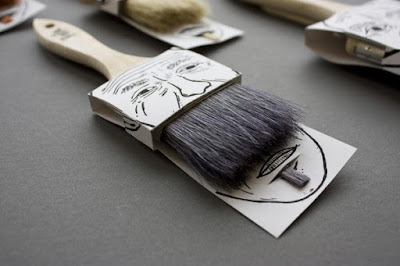Recently I found the website Spin The Aub by illustrator, animator and director Anna Ginsburg and designer and art director Freddy Taylor. The interactive site involves nine animated aubergines and nine musical soundtracks acting as a showcase for Ginsburg's hybrid style of animation.
Spin The Aub is a lighthearted and fun distraction, users can control the speed of the aubergine spin as the various soundtracks react accordingly. “The obvious association with the aubergine emoji is a nod to all that is saucy,” says Anna.
“Freddy and I wanted to push one ridiculous idea to the absolute limit. A rotating aubergine is such a simple concept, yet the possibilities are endless,” Anna explains. Each of the nine aubergines are made up of 100 drawings; there are four hand-rendered, four CGI and one hybrid of everything. Anna, who created all the 2D hand-drawn elements and stop motion animation, worked with Joseph May to help on the CGI animation. All types of the eggplant are portrayed including a furry one, a pixellated one, and even a denim one all making an appearance.
“Original soundscapes” have been composed by FrnkBoff, each an imagining of the individual aubergines adding another element to the project as the vegetables morph, ripple and explode.
I found this project really interesting. Despite it being a potentially silly/jokey idea I thought it was an extremely innovative and unconventional way for the illustrator to showcase her work to the world. I really like the colours used and the different styles of illustration and animation explored in the project. It's a clever but simple way to combine a number of different mediums. This project has showed me that even the wackiest of ideas can be a clever way of getting your work noticed and showcasing it in the industry. Any way of getting remembered and talked about will be extremely important when it comes to finding a graduate job after university.
From quickly reading this article I realised how it highlighted the importance of collaboration in industry. Ginsburg would not only be collaborating and in constant conversation with Taylor the animator when creating the video, but they are also likely to have a lot of input from the band themselves. Again showing that cross discipline collaboration is a vital skill. It'll be important to remember this as I move further into level 5 as I move onto briefs involving collaboration with illustrators and animators.
From quickly reading this article I realised how it highlighted the importance of collaboration in industry. Ginsburg would not only be collaborating and in constant conversation with Taylor the animator when creating the video, but they are also likely to have a lot of input from the band themselves. Again showing that cross discipline collaboration is a vital skill. It'll be important to remember this as I move further into level 5 as I move onto briefs involving collaboration with illustrators and animators.























































